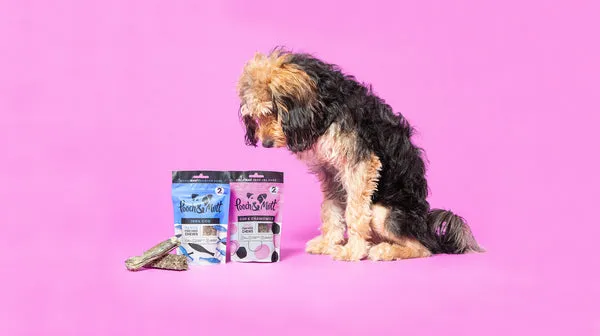Maintaining your dog’s dental hygiene is a critical part of their overall health and well-being, comparable to ensuring they receive proper nutrition or adequate exercise. Just like humans, dogs can suffer from plaque and tartar buildup, which can lead to serious dental problems if left unaddressed. While professional veterinary cleanings are essential, there are many effective strategies for Dog Tartar Removal At Home and prevention that every pet owner should know. Understanding these methods can help you keep your canine companion’s smile bright and healthy, and potentially reduce the frequency of costly professional procedures. For owners who travel, ensuring consistent care, perhaps through an overnight doggy daycare near me, can also contribute to overall pet health, including dental routines.
This article will delve into the nuances of plaque and tartar, their potential health risks, and provide a detailed guide on how you can tackle these issues effectively in your own home.
Understanding Plaque and Tartar: The Silent Threats
Before diving into removal and prevention, it’s crucial to understand what plaque and tartar are and how they differ. Both are significant contributors to poor canine oral health.
What is Plaque?
Plaque is a sticky, colorless film of bacteria, food particles, and saliva that constantly forms on your dog’s teeth, especially along the gumline. It begins to accumulate within hours after a dog eats. If not regularly removed, this soft film serves as a breeding ground for bacteria, leading to tooth decay and gum inflammation. You might notice it as a white, mucus-like substance or a slight yellowish tinge on the tooth surface.
What is Tartar (Dental Calculus)?
Tartar, also known as dental calculus, is the hardened form of plaque. If plaque is not removed within a few days (typically 3-5 days), it mineralizes due to the calcium salts in the dog’s saliva. Tartar is a rough, yellowish-brown substance that firmly attaches to the teeth and gumline. Unlike plaque, tartar cannot be easily brushed away with a toothbrush. Its porous surface further encourages plaque accumulation, creating a vicious cycle that accelerates dental disease. Tartar often has a foul odor, contributing significantly to bad breath in dogs.
Why Plaque and Tartar Are Dangerous for Dogs
The dangers of untreated plaque and tartar extend far beyond bad breath. They are the primary culprits behind periodontal disease, a common and painful condition affecting approximately 8 out of 10 dogs.
- Gum Disease (Gingivitis): Plaque and tartar irritate the gums, causing inflammation, redness, swelling, and bleeding – a condition known as gingivitis. This is the earliest stage of periodontal disease and is reversible with proper care.
- Periodontal Disease: If gingivitis is left untreated, the inflammation progresses, leading to the destruction of the tissues supporting the teeth. This can result in infections, abscesses, bone loss, and eventually, tooth loss. Dogs suffering from periodontal disease often experience severe pain, making eating difficult and diminishing their quality of life.
- Systemic Health Issues: The bacteria from severe dental infections can enter the bloodstream and travel to other organs, including the heart, kidneys, and liver. This can lead to serious health complications and organ dysfunction.
- Jaw Fractures: Advanced periodontal disease can weaken the jawbone, especially in smaller breeds, making them more susceptible to fractures.
Advanced Techniques to Soften Dog Tartar at Home
Once tartar has formed, it’s much harder to remove than plaque. While professional cleaning is often necessary for significant buildup, some home methods can help soften tartar and make it easier to manage or even prevent further accumulation.
Tartar-Control Toothpaste
Specialized dog toothpastes are formulated with abrasive ingredients and enzymes designed to break down tartar and inhibit its formation. These are different from human toothpastes, which often contain fluoride and other ingredients toxic to dogs. Regular brushing with a tartar-control toothpaste can significantly aid in softening existing tartar and preventing new buildup.
Water Flossers for Dogs
Similar to human oral irrigators, dog water flossers use a gentle stream of water to clean between teeth and along the gumline. This can help dislodge food particles, remove plaque, and soften tartar, making it easier to brush away. While not a standalone solution, it can be an effective supplement to your dog’s dental routine.
Dental Massage
If your dog tolerates it, gently massaging their gums can be beneficial. This stimulates blood flow, increases saliva production (which has natural cleansing properties), and can help dislodge loose plaque and tartar. It also gets your dog accustomed to having their mouth handled, making other dental procedures easier in the future.
The Role of Coconut Oil
Some anecdotal evidence suggests that coconut oil may assist in dog tartar removal due to its lauric acid content, which possesses antibacterial and anti-inflammatory properties. You can try rubbing a small amount of virgin coconut oil onto your dog’s gums and teeth as a supplementary treatment. Its pleasant taste might also make it more palatable for some dogs. However, this should not replace proven dental care methods.
Preventing Plaque Build-Up: Your First Line of Defense
Prevention is paramount in maintaining optimum oral health for your dog. By consistently implementing preventive measures, you can significantly reduce the risk of plaque hardening into tartar.
Regular Brushing: The Golden Standard
The most effective method for preventing plaque and tartar is regular tooth brushing. Ideally, dogs should have their teeth brushed daily, or at least several times a week, using a dog-specific toothbrush and toothpaste.
- Start Young: Introduce brushing when your dog is a puppy (around 6 months old) to get them accustomed to the process.
- Positive Reinforcement: Make brushing a positive experience. Use a calm setting, offer treats, and praise your dog during and after each session. Gradual introduction is key; start by letting them lick the toothpaste, then gently touch their teeth, slowly progressing to full brushing.
- Technique: Focus on the outside surfaces of the teeth, as this is where plaque tends to accumulate most.
 A long-haired grey and white dog, with a bobble in its hair and a toothbrush in its mouth, against a pale pink background
A long-haired grey and white dog, with a bobble in its hair and a toothbrush in its mouth, against a pale pink background
Dental Chews, Powders, and Chew Bones
While not a substitute for brushing, dental chews and products can significantly supplement your dog’s oral hygiene routine.
- Dental Sticks and Chews: Many dental sticks and chews are designed with textures and ingredients that help scrape away plaque as your dog chews. They can stimulate gums and break down accumulating plaque.
- Dental Powders: Products like seaweed-based dental powders can be added to your dog’s food daily. These natural ingredients work systemically to reduce plaque and tartar buildup and freshen breath. Results often become noticeable within 4-6 weeks of consistent use.
- Chew Bones: Long-lasting chew bones, especially those made from natural materials like fish skin, encourage vigorous chewing, which mechanically helps clean teeth.
Enzymatic Dental Treats
Specialized dental treats often contain enzymes such as protease, amylase, and glucose oxidase. These enzymes actively break down the components of plaque as your dog enjoys their treat, providing an additional layer of defense against buildup.
Healthy Fruit and Vegetable Snacks
Offering crunchy fruits and vegetables like apple slices (without seeds) or peeled carrots can act as natural toothbrushes. The fibrous texture helps scrub the tooth surfaces and stimulate gums, contributing to better oral health.
Water Additives
Dental water additives contain active ingredients that, when added to your dog’s drinking water, can help break down plaque and reduce bacteria in their mouth. They provide a continuous, low-effort method of dental care throughout the day.
Oral Gels and Rinses
Antiseptic oral gels and rinses for dogs can be applied directly to the teeth and gums. These solutions help reduce bacteria, freshen breath, and can be particularly useful for dogs who are resistant to brushing.
Dental Wipes and Sprays
For dogs who strongly dislike toothbrushes, dental wipes offer a compromise. These textured wipes, often soaked in antibacterial solutions, can be rubbed along the teeth and gums with your finger to help physically remove plaque. Dental sprays also offer a quick way to deliver antibacterial agents to the mouth. For instance, if you rely on in home pet sitting while away, a sitter can easily incorporate these less intrusive methods.
 A golden, long-haired dachshund taking a dental stick from a pot with toothbrushes, against a pale pink background
A golden, long-haired dachshund taking a dental stick from a pot with toothbrushes, against a pale pink background
When to Seek Professional Vet Advice
Despite all your efforts at home, there are times when professional intervention is necessary. Severe tartar buildup, advanced gum disease, or tooth pain cannot be effectively treated solely with home remedies.
Signs You Need to See a Vet
Contact your veterinarian immediately if you observe any of the following signs:
- Excessive yellowish-brown tartar on the teeth.
- Red, swollen, or bleeding gums.
- Persistent bad breath (halitosis).
- Difficulty chewing, reluctance to eat, or dropping food.
- Excessive drooling.
- Paw face rubbing or discomfort when touching the mouth.
- Loose or missing teeth.
Professional Dental Cleaning
Veterinarians perform thorough dental cleanings under general anesthesia. This allows them to safely scale off hardened tartar both above and below the gumline, polish the teeth, and conduct a comprehensive oral examination, including X-rays if needed. They can also address any underlying issues, such as extractions or gum treatments. The cost of professional cleaning varies depending on location and the extent of the procedure. Many dog owners also consider facilities like normans dog day care that might offer basic grooming packages, though these are typically not a substitute for a vet’s professional dental cleaning.
Can Tartar Removal Be Painful?
For dogs with severe tartar and periodontal disease, the cleaning process can be uncomfortable. This is why general anesthesia is often used, ensuring the dog remains calm and pain-free during the procedure. Post-procedure pain medication may be prescribed to manage any discomfort.
 A long-haired black and brown dog, next to our fish chews, against a pinky/purple background
A long-haired black and brown dog, next to our fish chews, against a pinky/purple background
Breed Predisposition to Dental Issues
While all dogs can develop dental problems, some breeds are genetically more prone to tartar buildup and periodontal disease.
- Small Breeds: Shih Tzus, Chihuahuas, Toy Poodles, Pomeranians, Dachshunds, and Yorkshire Terriers often have crowded teeth in smaller mouths, which creates more surfaces for plaque and tartar to accumulate.
- Brachycephalic Breeds: Dogs with flat-snouted faces like Boxers, Pugs, and Bulldogs also tend to have crowded teeth and unique jaw structures that contribute to dental problems.
- Other Breeds: Greyhounds and Cocker Spaniels are also noted for a higher predisposition to dental issues.
Owners of these breeds need to be especially diligent with at-home dental care and regular veterinary check-ups.
Frequently Asked Questions About Dog Dental Care
Can I use human toothpaste for my dog’s teeth?
No, never use human toothpaste for your dog. Human toothpastes often contain fluoride, xylitol, and other ingredients that are toxic if ingested by dogs. Always use a veterinarian-approved dog-specific toothpaste, which often comes in appealing flavors like chicken or peanut butter.
Can dog food clean my dog’s teeth?
While some dry kibbles are marketed as “dental diets” and have a larger, more abrasive texture designed to scrape plaque off teeth, their effectiveness is limited compared to brushing. They can help reduce plaque, but they are not a substitute for a comprehensive dental care routine. For dogs on a wet food diet, introducing some dry kibble might offer some mechanical cleaning benefits.
Can I use more than one dental product at a time?
Yes, combining different dental care methods can be highly effective. For example, you can brush your dog’s teeth daily, add dental powder to their food, and offer dental chews as treats. Always follow the feeding guidelines for each product to avoid overfeeding and consult your vet if you have concerns about combining treatments or your dog’s overall diet.
Conclusion
Effective dog tartar removal at home and consistent preventive dental care are fundamental to your dog’s health and happiness. By understanding the difference between plaque and tartar, recognizing the signs of dental problems, and implementing a regular routine of brushing, dental chews, and other supportive products, you can significantly reduce the risk of painful and costly dental diseases. Remember that while home care is vital, annual veterinary dental check-ups are indispensable for professional cleaning and addressing any issues that may arise. Prioritizing your dog’s oral hygiene now will ensure they enjoy a healthier, happier life with a dazzling smile for years to come.
